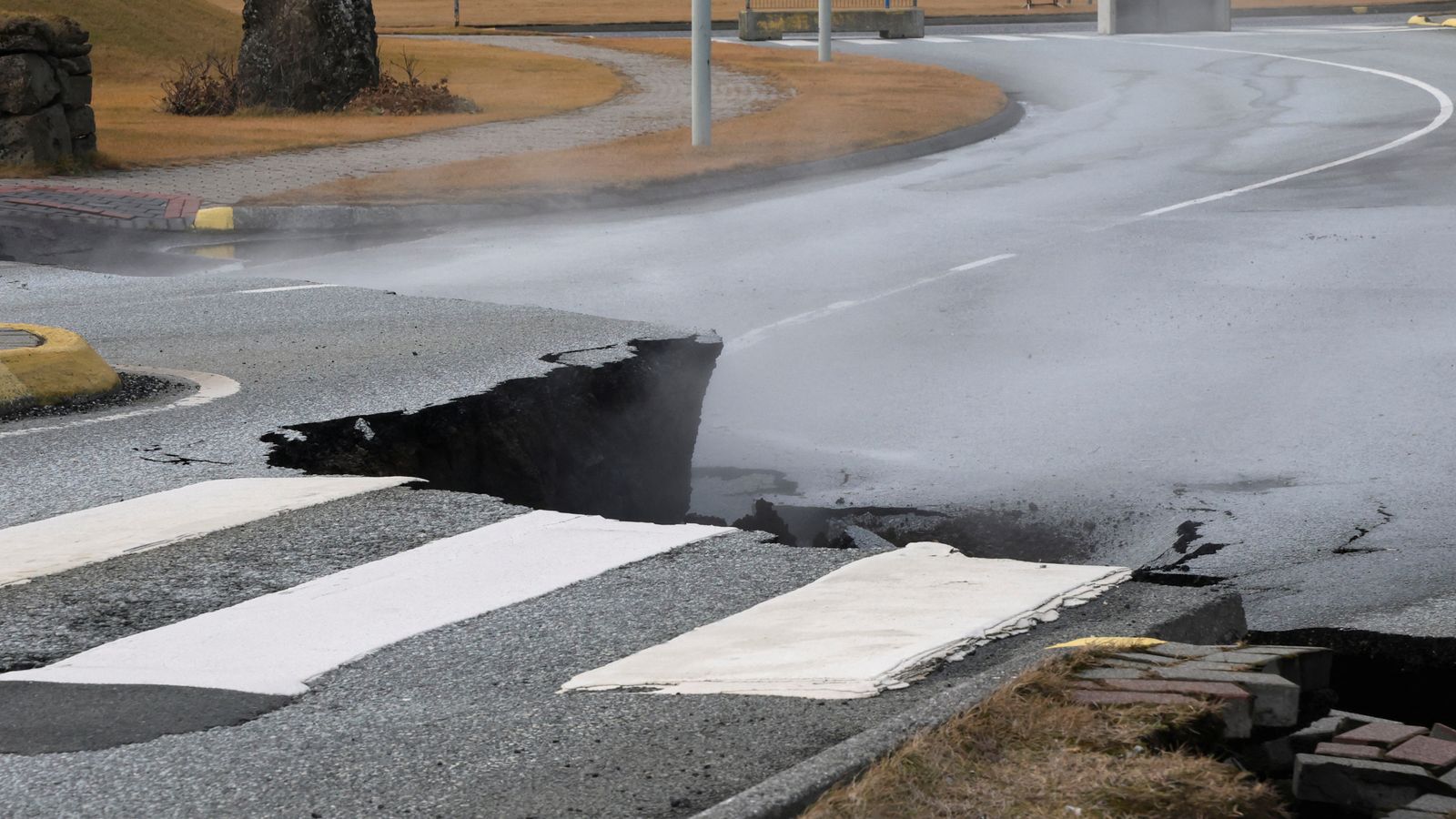Iceland is on high alert for a volcanic eruption, with a state of emergency declared and almost 4,000 residents evacuated from their homes.
There is a “considerable” risk of an eruption on or just off the Reykjanes Peninsula, about 30 miles from the capital Reykjavik, according to the Icelandic Meteorological Office.
The region has been shaken by hundreds of small earthquakes every day for more than two weeks.
Scientists have been monitoring a build-up of magma some three miles underground.
Here is what we know about when an eruption might happen.
When could the volcano erupt?
The probability of the volcano erupting at Fagradalsfjall in the coming days is “high”, according to the Icelandic Meteorological Office (IMO).
“We believe that this intrusion is literally hovering, sitting in equilibrium now just below the earth’s surface,” Matthew James Roberts from the agency said.
But there is still “tremendous uncertainty”, he added. “Will there be an eruption and if so, what sort of damage will occur?”
“At this stage, it is not possible to determine exactly whether and where magma might reach the surface,” the IMO said.
Earthquake activity at Fagradalsfjall decreased over the weekend, which “indicates that a new phase of magma intrusion is occurring”, said Dr Margaret Hartley, lecturer in Earth Sciences at Manchester University.
Previous earthquakes in the areas were “all preceded by decreases in seismic activity, so this isn’t necessarily an indication that the volcanic unrest is dying down”.
On Tuesday, the Icelandic authorities judged the risk has temporarily eased enough to allow Grindavik’s inhabitants to briefly return home – escorted by search and rescue teams – to collect pets and belongings.
Authorities have raised their aviation alert to orange, indicating an increased risk of a volcanic eruption.
Volcanic eruptions pose a serious hazard to aviation because they can spew highly abrasive ash high into the atmosphere, where it can cause jet engines to fail, damage flight control systems and reduce visibility.
Read more:
What is happening under the surface in Iceland?
How big could the Iceland eruption be?
How much damage will it cause?
How much disruption the eruption causes will depend on where the magma breaks the surface, and the size and style of the eruption, Dr Hartley said.
Dr Phil Collins from Brunel University London said an eruption would cause problems for the Icelandic people, but noted they are “very well prepared and have lots of experience in dealing with eruptions”.
“If the eruption does occur, there may be significant lava flows which could destroy peoples’ homes and other infrastructure, as well as block valleys and change surface drainage,” he said.
Any eruption is not expected to cause the kind of ash cloud created by the Eyjafjallajokull eruption back in 2010, which caused chaos to global air travel.
Dr Dave McGarvie, a volcanologist with the University of Lancaster said: “The volcanoes on the Reykjanes Peninsula do not have the ability to produce the disruptive ash clouds that characterised the Eyjafjallajokull 2010 eruption.”
Lessons were learnt from that event, he said, and even an identical eruption would not be so disruptive now.

